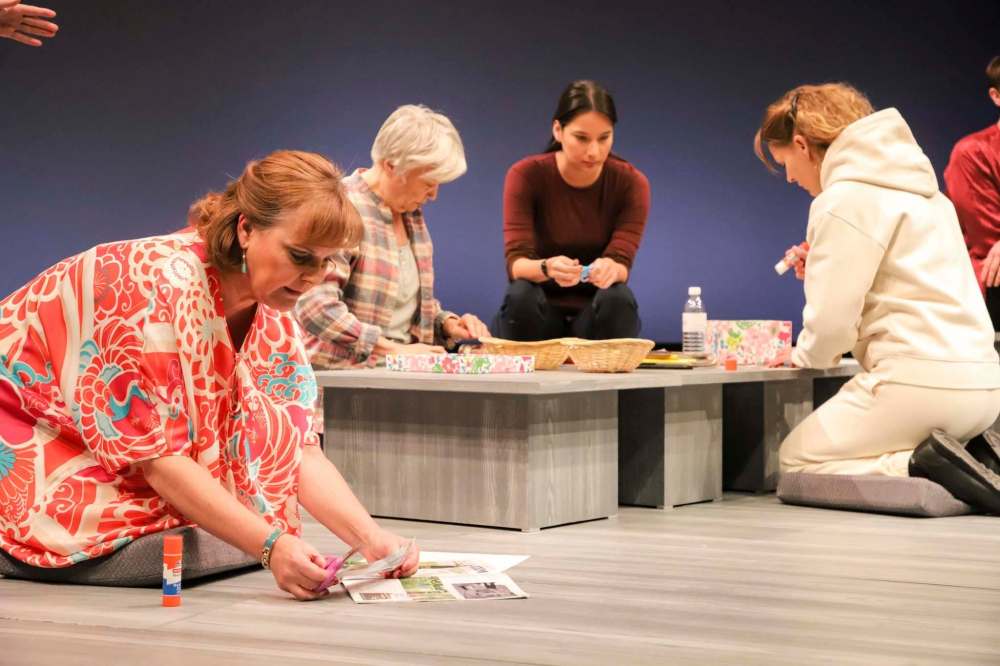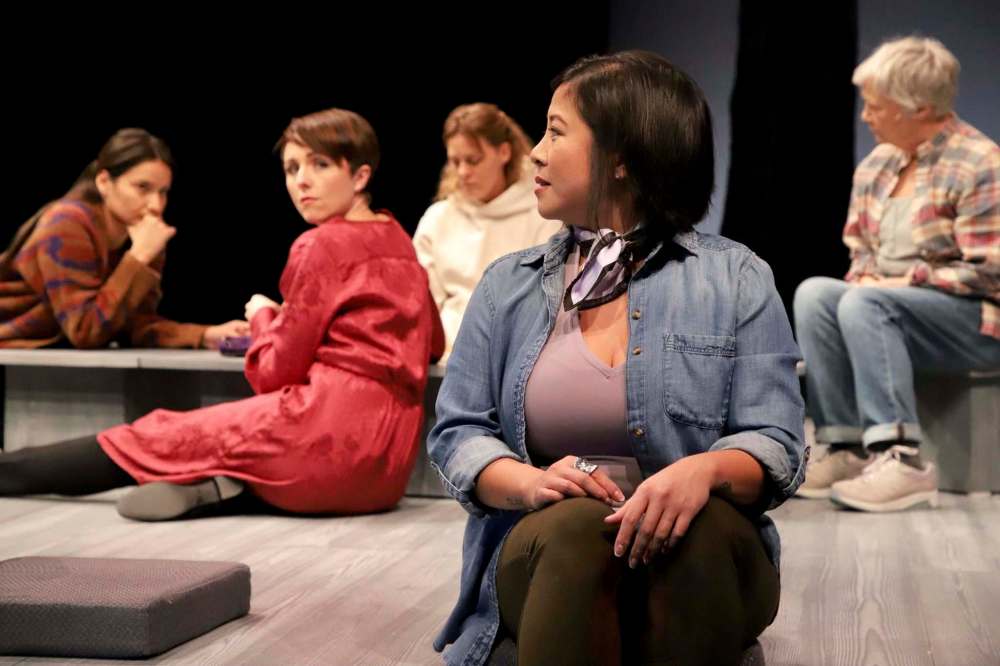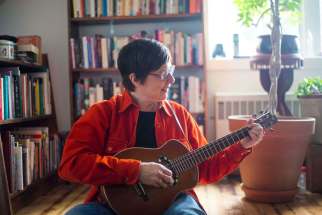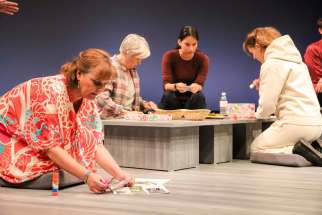Emerging from a dark moment There's no denying Happy Place's power, but its six stories of trauma are unable to unite as one
Read this article for free:
or
Already have an account? Log in here »
To continue reading, please subscribe:
Monthly Digital Subscription
$0 for the first 4 weeks*
- Enjoy unlimited reading on winnipegfreepress.com
- Read the E-Edition, our digital replica newspaper
- Access News Break, our award-winning app
- Play interactive puzzles
*No charge for 4 weeks then price increases to the regular rate of $19.00 plus GST every four weeks. Offer available to new and qualified returning subscribers only. Cancel any time.
Monthly Digital Subscription
$4.75/week*
- Enjoy unlimited reading on winnipegfreepress.com
- Read the E-Edition, our digital replica newspaper
- Access News Break, our award-winning app
- Play interactive puzzles
*Billed as $19 plus GST every four weeks. Cancel any time.
To continue reading, please subscribe:
Add Free Press access to your Brandon Sun subscription for only an additional
$1 for the first 4 weeks*
*Your next subscription payment will increase by $1.00 and you will be charged $16.99 plus GST for four weeks. After four weeks, your payment will increase to $23.99 plus GST every four weeks.
Read unlimited articles for free today:
or
Already have an account? Log in here »
Hey there, time traveller!
This article was published 09/11/2018 (2587 days ago), so information in it may no longer be current.
Pamela Mala Sinha’s Happy Place clearly comes from a deeply personal place. That is both to its credit and its detriment.
The Winnipeg-born playwright’s drama, which opened at Prairie Theatre Exchange on Thursday, has the undeniable ring of truth — so much so, in fact, that it merits a content warning for those who may be affected by hearing about sexual assault or suicide.
But however much verisimilitude it delivers, the story of six women attempting to heal from personal trauma feels like six disparate strands that aren’t ever braided into a compelling dramatic whole.

That’s not to say Happy Place isn’t entertaining or thoughtful or meaningful; for a play that deals with such darkness, it can be surprisingly light, and often funny, but there’s just something missing, some central metaphor to connect us to the material and take it from documentary to drama.
Set in a medical ward for women recovering from suicide attempts, it focuses, in a way, on Samira (Darla Contois), a new arrival who is struggling to recall the details of her violent rape. She wants to see her attacker punished, but her mind has mercifully erased the awful memories.
She’s in the facility with five other women, all dealing differently with their issues — abuse, depression, loss. Thrust together, they do art therapy, bicker and support each other, even though they only thing they have in common is their pain.
Sinha captures the rhythms of institutional life — the boredom, the black humour, the petty squabbles, the brief bonds that will never survive outside the hospital walls — and her dialogue is sharp and insightful, without relying on platitudes.
The ensemble cast is strong; though one wishes the characters were more than mere sketches, in most cases they are lifted above stereotype by the performances.
As young mother Celine, Paula Potosky wavers between toughness and vulnerability, while Megan McArton’s gruff, bawdy Mildred gets the most laughs, though it’s clear her give-no-effs attitude is a protective mechanism.

Busybody Joyce (a delightful Jan Skene) wants to know everyone’s business and seems to treat her time in hospital like she’s on holiday, while frosty Rosemary (Hazel Venzon) is grieving an unusual loss.
Alicia Johnston’s eyes glitter with mania as the troubled Nina, who we sense will never find peace, but as Samira, the playwright’s stand-in in this quasi-autobiographical tale, Contois’s delivery feels too flat for the often explosive, soul-baring material.
Daina Leitold radiates empathy and competence as Louise, the women’s favourite doctor, but she’s tasked with a lot of burdensome exposition — explaining how traumatic memories work and the like — which feels unnatural.
Happy Place is PTE artistic director Thomas Morgan Jones’ debut as a director with the company, and he juggles the women’s stories adeptly, giving the fragmentary work a sense of forward motion it doesn’t really have, but nothing can overcome the sense that this is a series of vignettes with each woman just waiting for her time to speak.
Set designer Jamie Plummer’s aptly utilitarian and effective flat grey stage conveys the blandness of an institution without being bland itself, with a tree in the corner seeming to symbolize hope that’s in sight. Hollow boxes and cushions are swiftly moved about to change locations, from common room to a courtyard.
As the women reveal their histories over the course of the two-hour show (with one intermission), we see that no one’s trauma trumps another’s, that our pain is our own; there’s no common path that leads to healing.

But by slowly teasing out what brought each woman to attempt suicide, the playwright makes the audience complicit in Joyce’s nosiness, eager to find out all the gory details but never really following up on what makes them tick.
The tactic also has effect of reducing each woman to the specifics of her trauma. Rather than becoming fleshed-out characters, they become defined by the event that brought them low, contravening the play’s tentatively hopeful message.
jill.wilson@freepress.mb.ca Twitter: @dedaumier
Theatre review
Happy Place
Prairie Theatre Exchange
● To Nov. 25
● Tickets $33 to $53 at pte.mb.ca or 204-942-5483
★★★ out of five

Jill Wilson writes about culture and the culinary arts for the Arts & Life section.
Our newsroom depends on a growing audience of readers to power our journalism. If you are not a paid reader, please consider becoming a subscriber.
Our newsroom depends on its audience of readers to power our journalism. Thank you for your support.









